Le cercle de Prochaska et Di Clemente interveniraddictions.fr, le portail des acteurs de santé
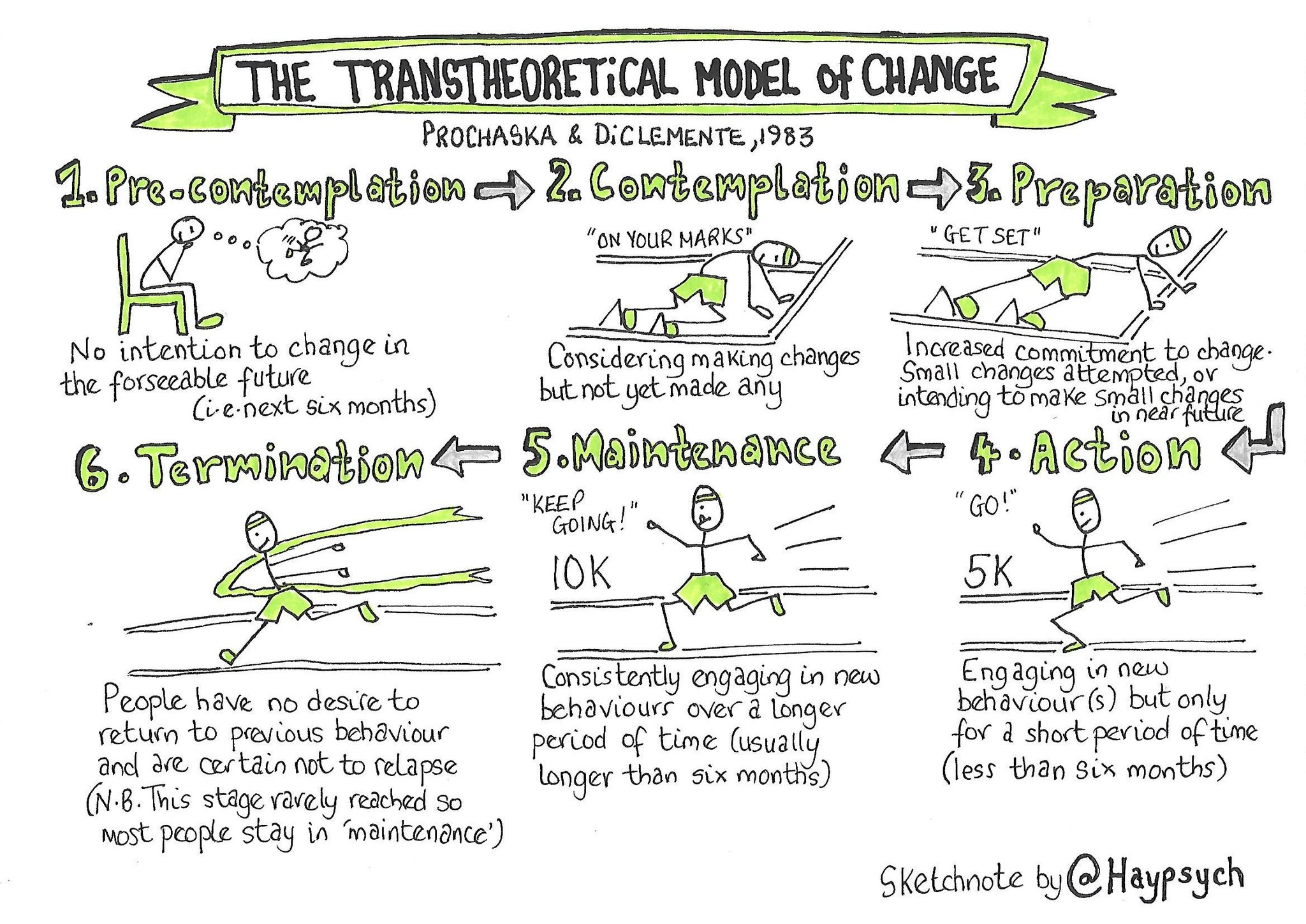
💣 The cycle of change model by prochaska and diclemente. Six Stage Model of Behaviour Change
Abstract. The transtheoretical model posits that health behavior change involves progress through six stages of change: precontemplation, contemplation, preparation, action, maintenance, and termination. Ten processes of change have been identified for producing progress along with decisional balance, self-efficacy, and temptations.
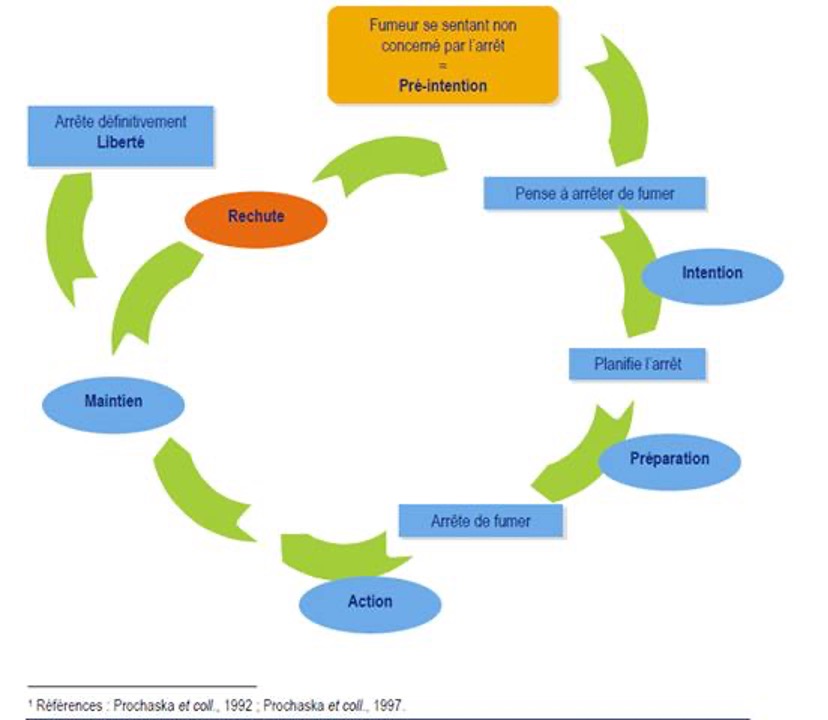
01 Cycle de Prochaska et Di Clemente Je ne fume plus ! JNFP
Offers transtheoretical therapy as one alternative when seeking a synthesis for the increasing proliferation of therapeutic systems. From a comparative analysis of 18 leading systems, 5 basic processes of change were identified by the present 1st author (1979). They are consciousness raising (feedback, education), conditional stimuli (counterconditioning, stimulus control), catharsis.

Prochaska and DiClemente's Stages of Change Model Download Scientific Diagram
For 7 years, Prochaska and DiClemente worked with a four-stage model, omitting the stage between contempla- tion and action (Prochaska & DiClemente, 1983, 1985). Re- cent research has supported the importance of assessing preparation as a fifth stage of change (DiClemente et al., 1991; Prochaska & DiClemente, 1992).
The Social Work Podcast Prochaska and DiClemente's Stages of Change Model for Social Workers
Prochaska and DiClemente (1983) noticed that the change from unhealthy behavior (smoking) to healthy behavior (not smoking) is complex and involves a series of stages. These stages do not happen in a linear order; the process is often cyclical. Some stages may be missed, or the addicts might go back to an earlier stage before progressing again.

Prochaska and DiClemente's Cycle of Change model Download Scientific Diagram
The Stages-of-Change Model was developed by James Prochaska and Carlo DiClemente as a framework to describe the five phases through which one progresses during health-related behavior change (Prochaska & DiClemente, 1983).It is part of their broader Transtheoretical Model, which not only assesses an individual's readiness to act to eliminate a problem behavior but also includes strategies.

Prochaska Transtheoretical Model Social Work Toolbox
James O. Prochaska. The transtheoretical model of James Prochaska and Carlo Di Clemente. James O. Prochaska (born 6 August 1942 - died 9 July 2023) was professor of psychology at the University of Rhode Island. He was the lead developer of the Transtheoretical Model of Behavior Change (TTM) beginning in 1983.
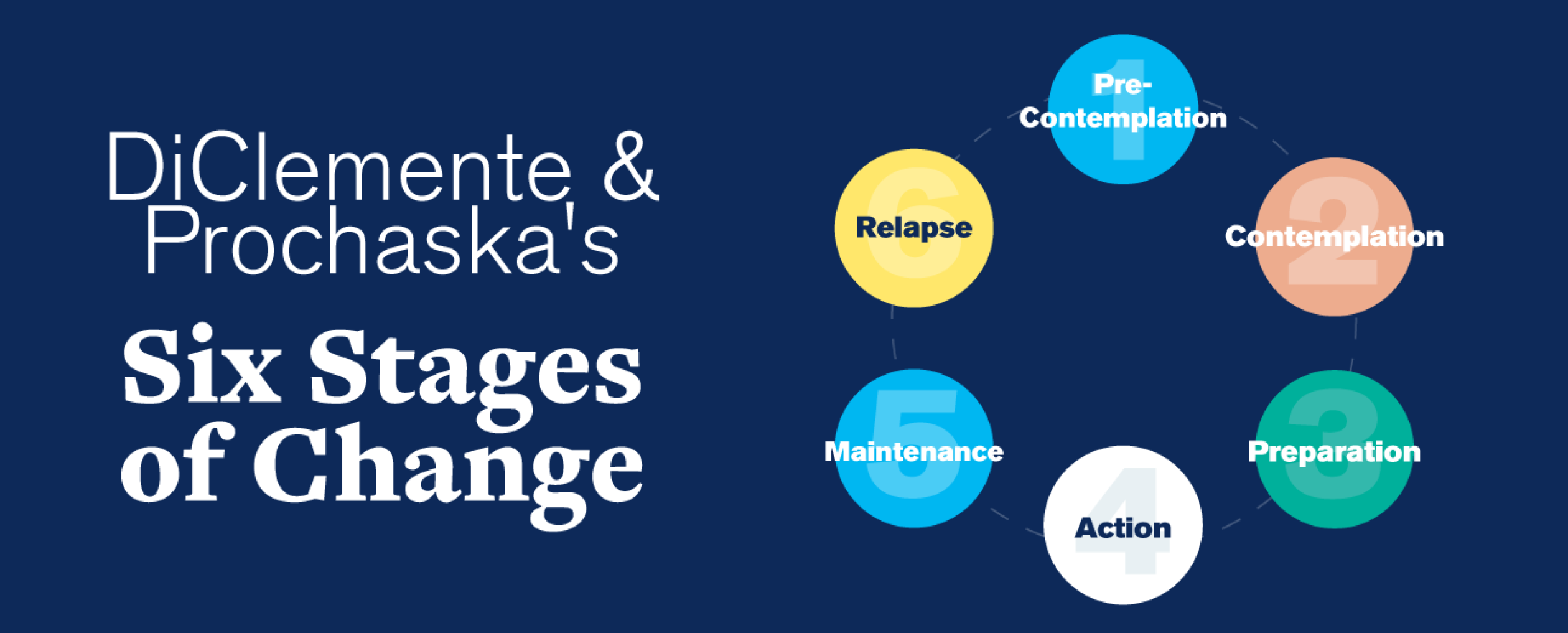
Prochaska and DiClemente's Stages of Change Model for Social Workers
The transtheoretical model (TTM) offers an integrative framework for understanding and intervening with human intentional behavior change. There are 3 organizing constructs of the model: the stages of change, the processes of change, and the levels of change. Although the model has been used with a variety of health risk and health protective behaviors, much of the original and continuing.

James Prochaska PhD2050 (Philippe Destatte)
De cirkel is gebaseerd op het transtheoretische veranderingsmodel van Prochaska en Diclemente. Dit model is een van de pijlers van de methode van motiverende gespreksvoering.. Prochaska, J.O., & DiClemente, C.C. (1982). Transtheoretical therapy: Toward a more integrative model of change (19) 3 Psychotherapy: Theory, Research & Practice, 276-288.
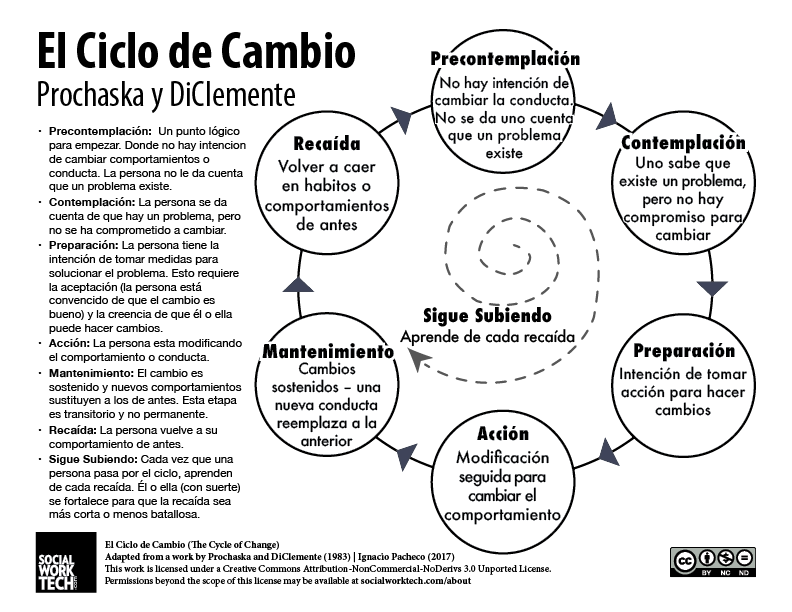
El Ciclo de Cambio The Stages of Change (Prochaska & DiClemente), translated to Spanish
Prochaska & Diclemente's Six Stages of Change Stage 2: Contemplation. Stage 3: Preparation. Stage 4: Action. Stage 5: Maintenance. Stage 6: Relapse. Six Stages of Change Description Indicators Stage 1: Pre-Contemplation This is the entry point of a person into the change process. The individual has not even considered the

Les stades de changement de comportement décrits par Prochaska et Di... Download Scientific
Clarify: decision is theirs. Encourage re-evaluation of current behavior. Encourage self-exploration, not action. Explain and personalize the risk. Contemplation. Ambivalent about change: "Sitting on the fence". Not considering change within the next month. Validate lack of readiness. Clarify: decision is theirs.
Fig1 Model of Stage of change, Prochaska, DiClemente, Norcross (1992)... Download Scientific
Stages of change in the modification of problem behaviors. 1992:28:183-218. J O Prochaska C C DiClemente. PMID: 1620663. Behavior Therapy / methods*. Health Promotion / methods*. Patient Compliance / psychology. Smoking Cessation / methods*. Smoking Cessation / psychology.

The Stages of Change Continuum (DiClemente and Prochaska, 1998) Download Scientific Diagram
Five official stages are described in DiClemente and Prochaska's Stages of Change Model, including pre-contemplation, contemplation, preparation, action and maintenance. An unofficial 6th stage, relapse, is popularly included because occasional slips are inevitable in the change process. 1. The Stages of Change Model was originally used to help.
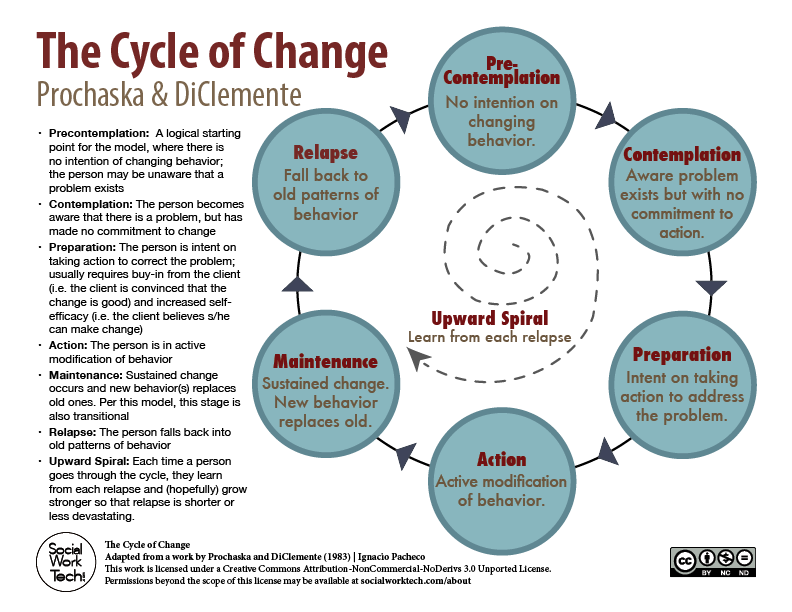
The Stages of Change (Prochaska & DiClemente) Social Work Tech
Prochaska and DiClemente's Transtheoretical Model of Behavioral Change (TTM) is widely known and focuses on understanding how individuals can make a behavior change.In the 1970s, these authors understood that no theory could explain the process of behavior change. A proposal for an integrative approach was then created, based on the search for common foundations for change in different.

260117 Training motiverende gespreksvoering
5 minutes. The transtheoretical model of change came about in an attempt to understand how to get people to change their addictive behaviors. Psychologists James Prochaska and Carlo DiClemente came up with the idea in 1982. These two researchers tried to understand how and why people change, whether they do it on their own or with a therapist.
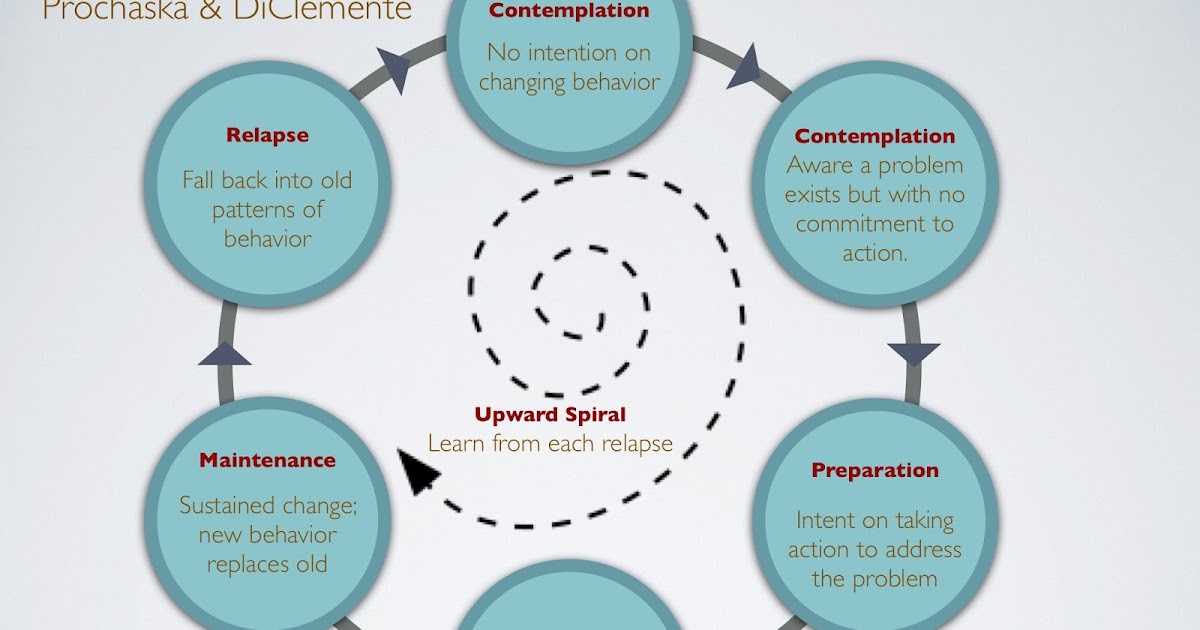
Stages Of Change Model Prochaska Diclemente 1983 Vários Modelos
Introduction. In 1983, Prochaska and DiClemente developed the Stages of Change model which describes the different stages a person goes through in order to facilitate a behavioural change (e.g. stopping smoking). 1 This model helps healthcare professionals better understand what patients are thinking and feeling about their behavioural change. By identifying which stage your patient is at, you.
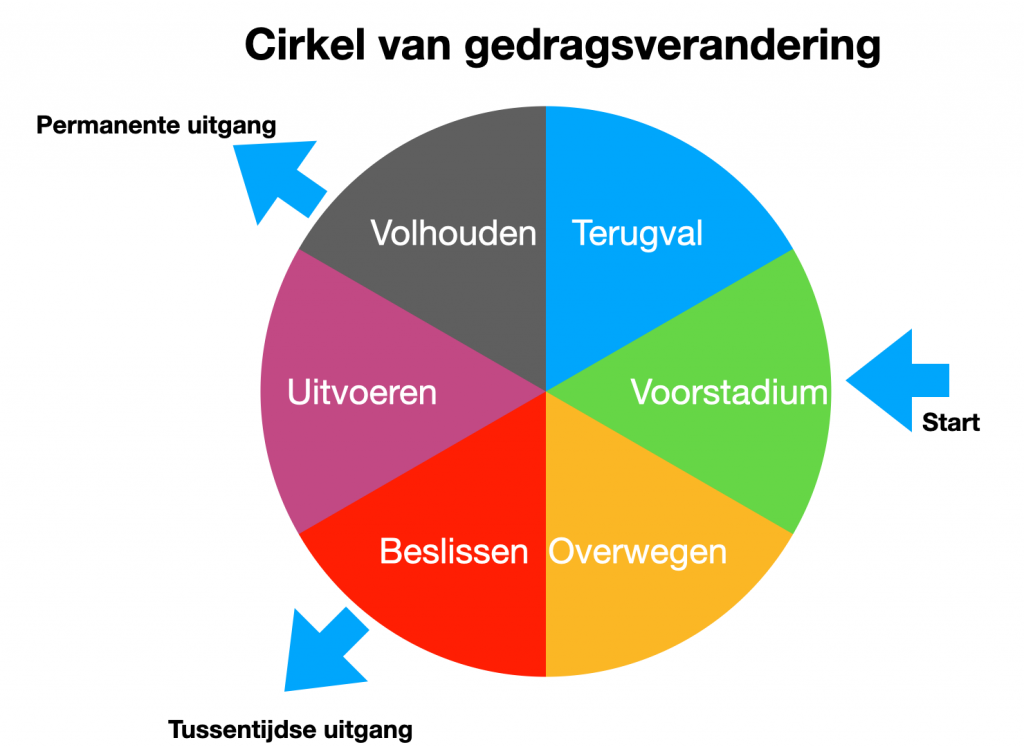
De cirkel van Prochaska en Diclemente Motiverende Gespreksvoering
Stages of change, according to the transtheoretical model. The transtheoretical model of behavior change is an integrative theory of therapy that assesses an individual's readiness to act on a new healthier behavior, and provides strategies, or processes of change to guide the individual. The model is composed of constructs such as: stages of change, processes of change, levels of change, self.